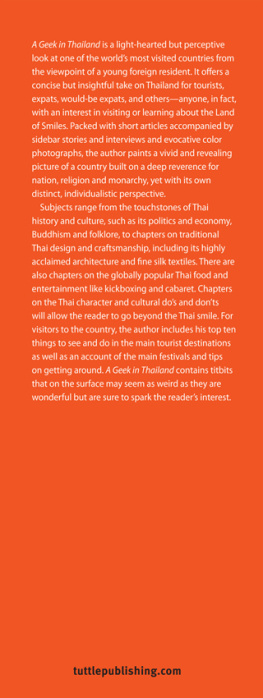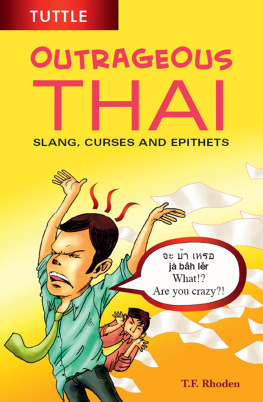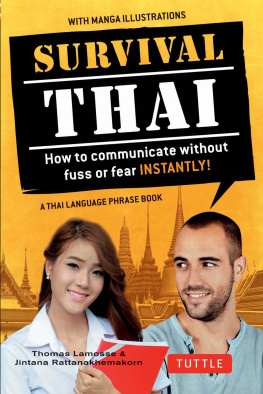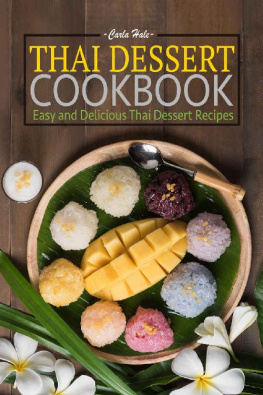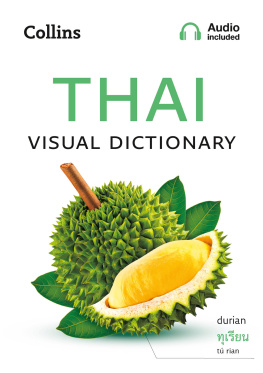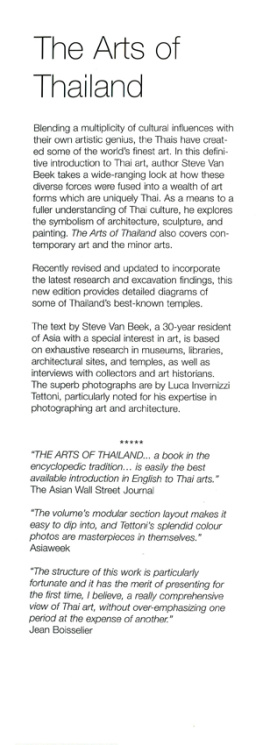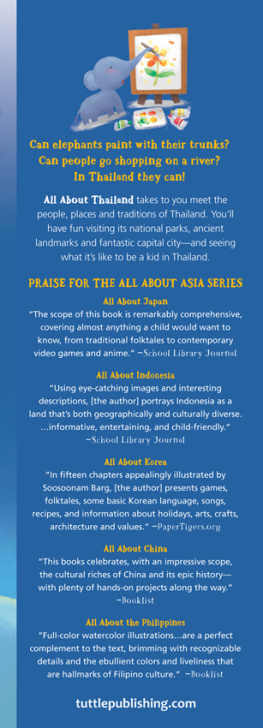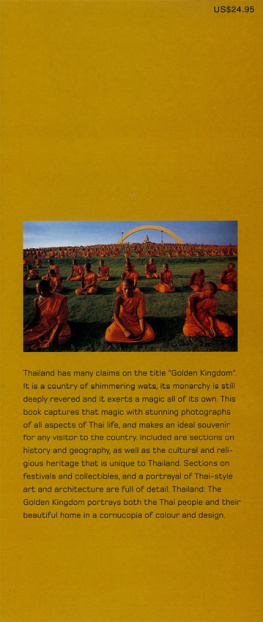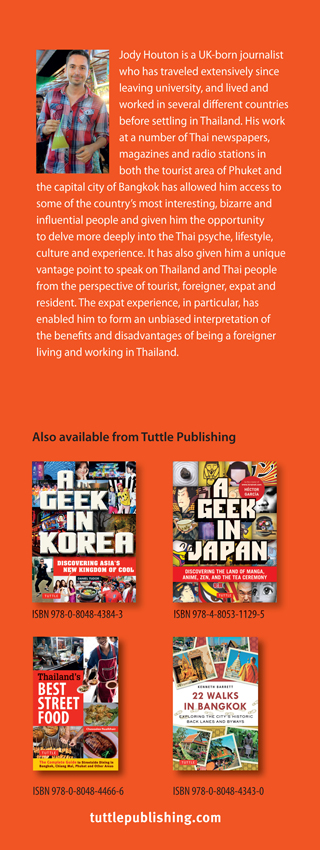
CHAPTER 1
THAI HISTORY AND CULTURE

How did ancient Siam come to be the colorful country of contemporary Thailand? Here, we will discover some of the most famous, influential and controversial Thais, both past and present. Religion, Nation, Monarchy are at the heart of Thai culture and are where, as geeks in Thailand, we will begin.
A BRIEF HISTORY OF THAILAND
The ancient kingdom of Siamfrom the Sanskrit word Syama, meaning dark or brownwas renamed Thailand in 1948.
This was, in fact, the second time the countrys name had changed. Siam was first renamed Thailand in 1939, at the onset of World War II, by then Prime Minister Field Marshal Luang Plaek Phibunsongkhram who believed the name change would whip up much-needed ultra-nationalist spirit to unify or at least inform the approximately 50 ethnic groups resident in the country that it was a land for Tais, the dominant ethnic group at the time.
Although Thailands hosting of Japanese forces and perceived alignment with the Japanese in World War II was retrospectively deemed to have been under duress as opposed to being allied (Thailand was occupied by 150,000 Japanese troops), it was decided to revert to the pre-war name Siam at the end of the war, in 1945.
WHATS IN A NAME?
The word Thai in the Thai language means independence, leading many to believe the choice of name refers to Thailands ability to resist attempts at Western colonization, the only Southeast Asian country to successfully do so. Others believe the name refers to those who were to become the countrys most populous and dominant group of peoplethe Tais. The Tais were initially an ethnic group hailing from southern China, who migrated into the Chao Phraya River valley in central Thailand around AD 1000, an area already inhabited by two main Austro-Asiatic groups speaking Mon and Khmer. Present-day Thais are the product of the assimilation and fusion of these three groups.
In recent years, some Thai scholars, including historian Charnvit Kasetsiri, have called on the country to revert to its original name, Siam. Although the widespread practice of Theravada Buddhism has promoted racial harmony, Charnvit points out that it was only when the country became known as Thailanda land for Taisthat its 50 other ethnic groups currently residing alongside the Tais, including Yuan, Lao, Malayu, Karen, Hmong, Chinese and, most recently, farang (people of European descent), were discriminated against and dissuaded from expressing their customs, dress and language in favor of a unified Thai existence or Thai-ness. Charnvit believes that a return to the name Siam would be the first step in signaling that not only the countrys past but also its present is made up of many different ethnicities and ideologies, and is the only way to bring about reconciliation of its mosaic of peoples and cultures.
Field Marshal Plaek was subsequently forced out of office and put on trial for war crimes, but was acquitted owing to strong Thai public support. In 1947, he led a coup and once again became prime minister. The following year Siam, for the second and final time, became Thailand.
THAILANDS FOUR KINGDOMS
Thailand has gone through a myriad of changes and been exposed to numerous influences throughout its history. The existence of a number of separate, distinct and often co-existing Thai kingdoms has been largely responsible for the formation of the multifaceted Thailand we know today.
Sukhothai The Sukhothai kingdom of Thailand (12381448) is considered to be the Golden Age of Thailand. As the first independent Thai state following the decline of the Khmer empire in the early 13th century, it is also believed to signal the beginning of modern Thai history.

The Sukhothai kingdom was a prosperous and plentiful place for the country and its people, one where rivers were full of fish and fields of rice. It was also a time of relative peace, with good relationships with neighboring countries. During the Sukhothai period, it was believed that kings would keep bells outside of their palaces. If any subject had a grievance, he would ring the bell and the king would come to the gate and dispense justice accordingly. This leadership style was later to become known as father governs children and is still relevant today, not only in the palace but also in the hierarchy of Thai companies and organizations.
Although its authenticity has subsequently been questioned, the Thai alphabet was created by King Ramkhamhaeng during this period, evidenced by the discovery of an inscribed tablet, the Ramkhamhaeng Stele. In the script, the king speaks of his benevolent leadership style. King Ramkhamhaengs paternal rule and the culture and traditions of Sukhothai were later to take on further significance during the 1932 pro-democracy revolution, when scholars argued that it was the Golden Age of Thailand that, in fact, had given birth to what was to become a peculiarly Thai style of democracy.

Ayutthaya The Ayutthaya kingdom (13501767) is perhaps the best-known ancient Thai kingdom as its capital is still resplendent with historical buildings and artifacts. This period of Thai history witnessed huge economic growth as well as the establishment of relations with foreign traders, especially the Portuguese. With great power came great change and during the Ayutthaya period Thai society became distinctly hierarchical, with the large majority of Thais working as slaves or serfs for landowners, nobles and officials. Unlike the paternalistic rule of the Sukhothai period, the kings of Ayutthaya had absolute power and were perceived as incarnations of gods.
The Ayutthaya period was integral in developing the Thai arts where all members of society, from court officials to artisans and scholars of Buddhist learning joined together to make and decorate the areas temples and palaces.
But this period in Thai history was also fraught with wars and battles with Burma, which led to the ultimate sacking of the city in 1767 and subsequent destruction of a large number of records, palaces and temples. Despite this, for a long period during the Ayutthaya reign the kingdom was largely considered to be the strongest power in mainland Southeast Asia.

Lanna Much like the Sukhothai kingdom, the Lanna kingdom, which ruled from the 13th to 15th century in northern Thailand, had an incredible influence on Thai society and culture and is still nostalgically regarded.
The Lanna kingdom co-existed during the Sukhothai and Ayutthaya kingdoms, and at its height its power and influence were said to have rivaled Ayutthayas with whom it had repeated battles and skirmishes. It was during this period that Lannas culture and traditions of what is widely considered as the cultural capital of Thailand, Chiang Mai, were developed and firmly entrenched in Thai culture. Lanna architecture, woodcraft and masonry are easily identifiable and revered today. The kingdom eventually fell to the Burmese in 1558 but returned as a vassal state of Siam in the latter part of the 18th century.
Next page
